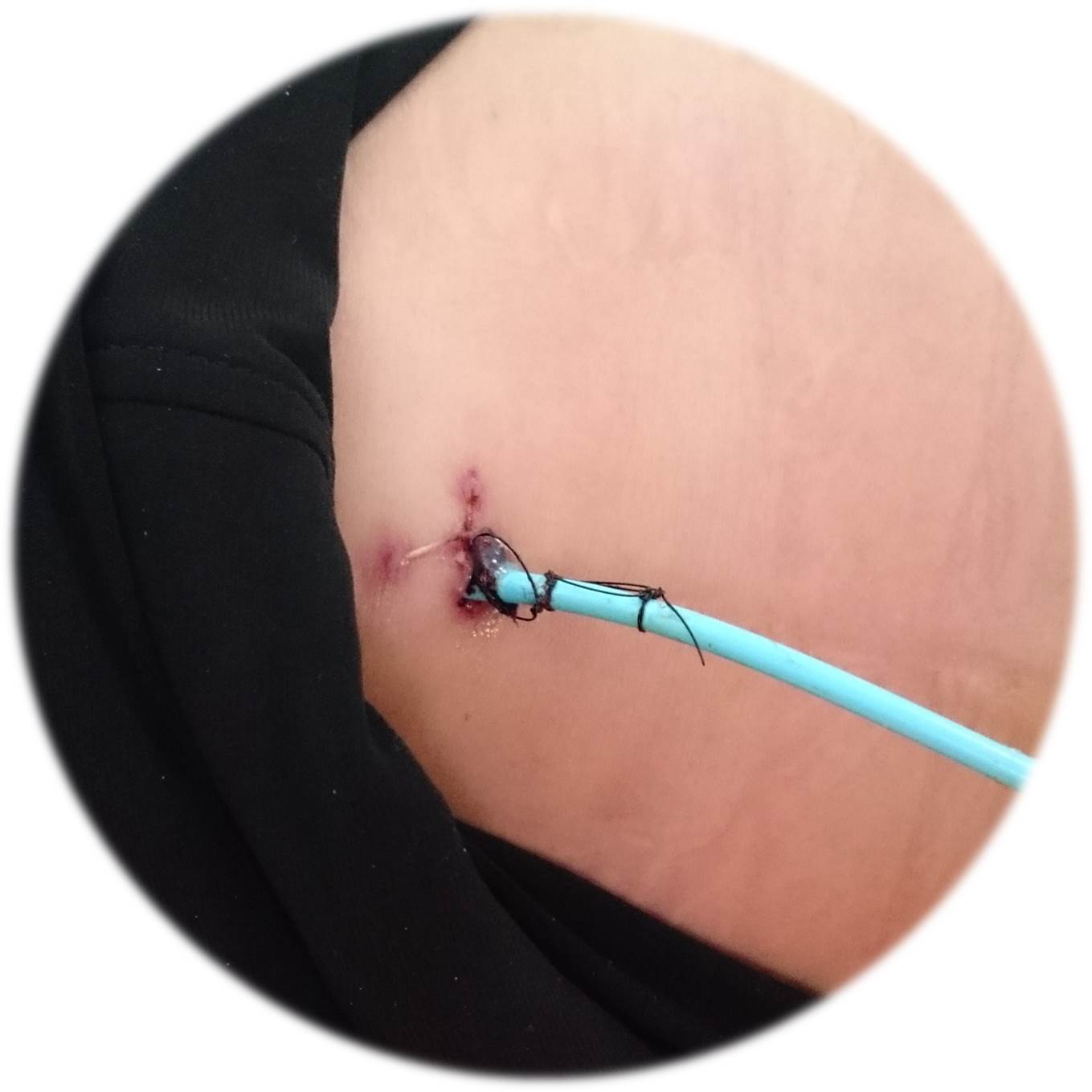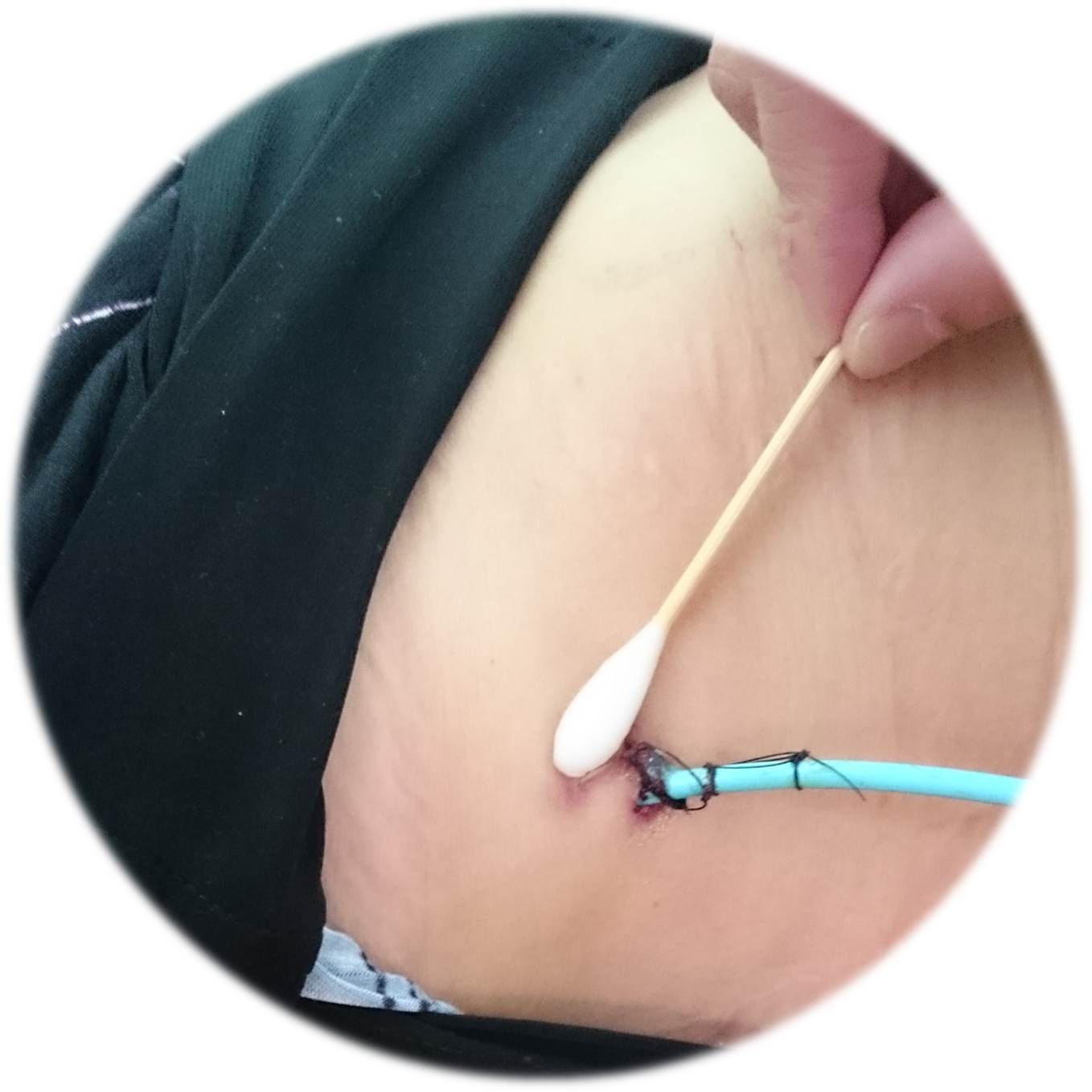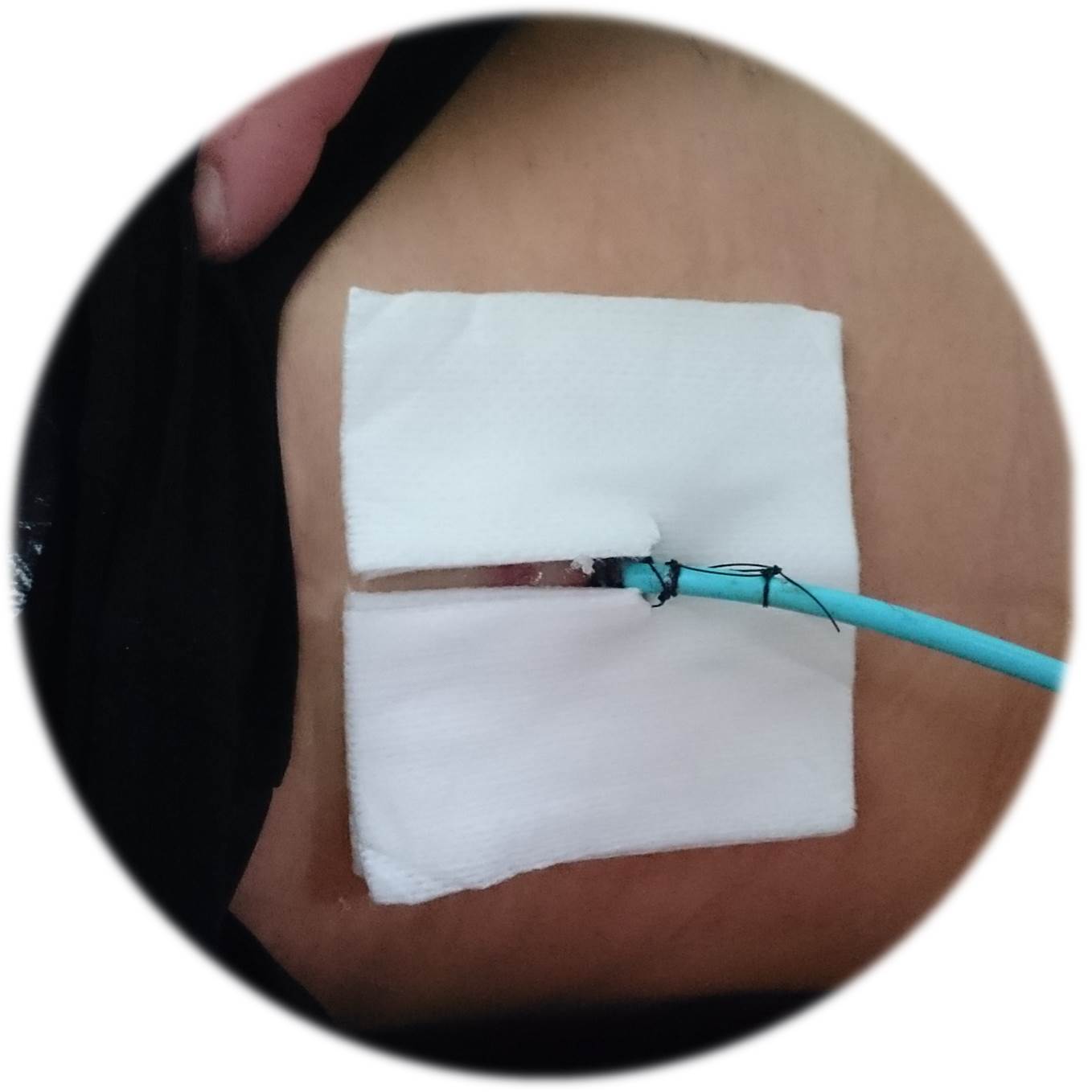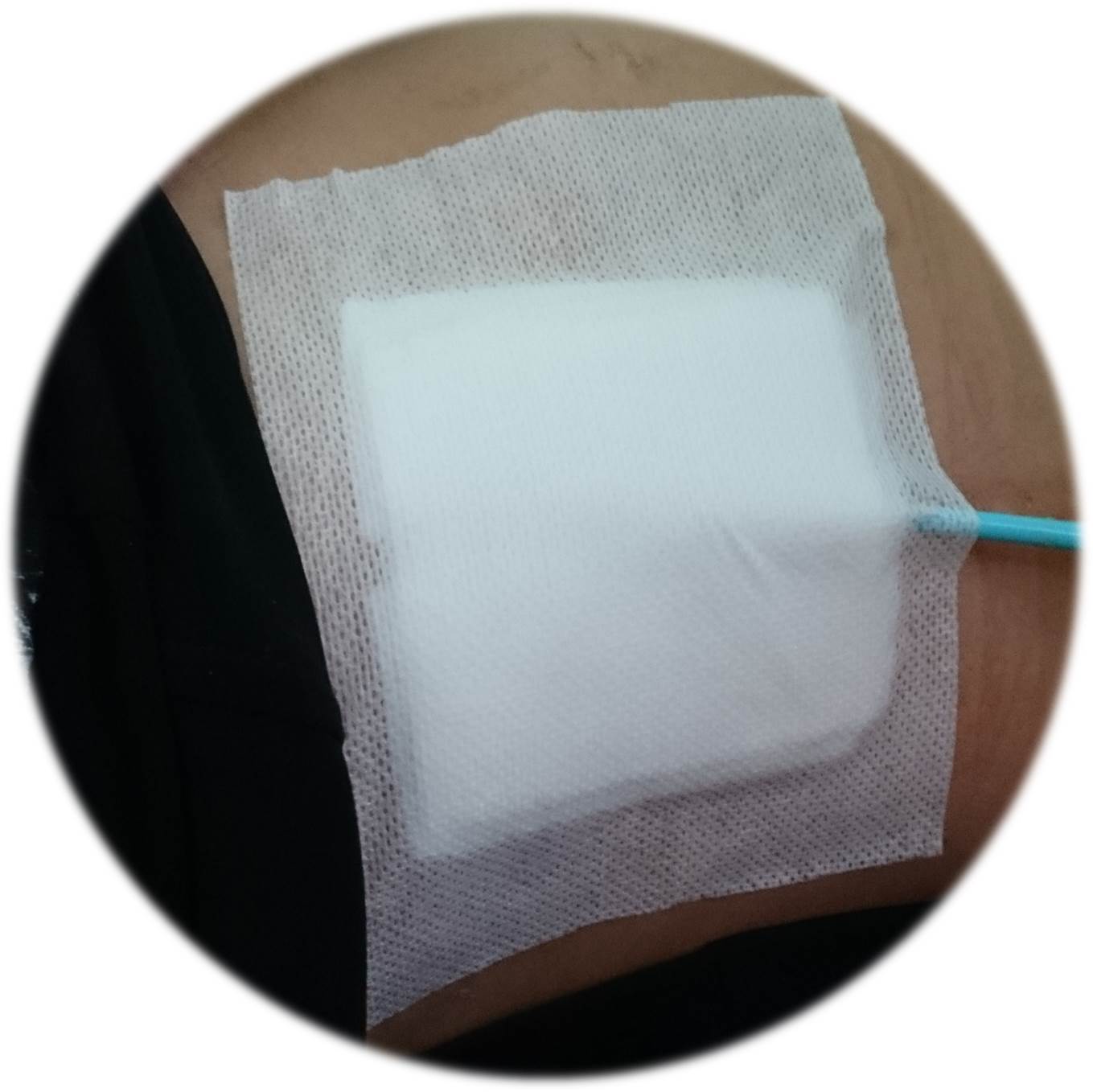What is a percutaneous transhepatic cholangial drainage?
A biliary catheter is a small flexible, rubber tube placed into the common bile duct, the passageway for the bile to flow from the gallbladder and bile duct externally into a bag outside your body.
How do I care for the tube?
- Empty the bag before it is completely full.
- Sponge baths are recommended in order to keep the dressing dry.
- You cannot go swimming.
- You can take a shower if you put a plastic covering, such as Saran Wrap, over the area.
- The dressing of split sponges, 4x4 gauze and tape, should be changed every 3 days or when it gets soiled, wet, or loose. It is very important to wash your hands before removing the old dressing and then again before applying the new dressing. The Tegaderm (clear plastic) tape which holds the blue plastic ring in place and telfa should only be changed once a week or when it becomes soiled, wet, or loose.




How do I change the dressing?
- Assemble supplies: telfa, Tegaderm, scissors, split gauze sponges, 4x4 gauze sponges, tape, and connecting tube and drainage bag- if needed.
- Carefully remove the old dressing, do not pull the drainage catheter and keep the blue plastic ring against the skin.
- Inspect the skin around the catheter. Be aware of any unusual redness, tenderness, or drainage.
- Wash your hands thoroughly with soap and warm water.
- Cut a round piece of telfa, the same size as the blue disc, or slightly larger. Cut a slit in the telfa, so that it will fit around the catheter. Place the telfa under the blue disc.
- Fold a new Tegaderm in half and cut a hole in the center about the size of the nipple on the blue disc. Put the catheter through this hole, and apply the Tegaderm to the skin. If the catheter is attached to a drainage bag, you must first disconnect the bag, then slip the catheter through the Tegaderm.
- Place two split sponge gauze around the catheter.
- Fold a 4x4 gauze on each side of the catheter, so you are able to curl the catheter without kinking it. The catheter should rest on the gauze and not the skin.
- Cover the catheter with a 4x4 gauze and secure the dressing with tape.
- Put a piece of tape below the dressing to hold the catheter and act as a safety device.
- The external drainage bag should be rinsed out and cleaned once a week with soap and water. Please allow it to dry thoroughly. You are given a second bag to use for these changes.
Supplies may be provided at each appointment. It will be helpful to bring a list of what you need.
Problems you may experience:
- The blue plastic ring comes away from the skin.
- If this is only slightly away from the skin, push it back so that it touches the skin. It should move easily without much force.
- If it is more than 1 inch away from the skin, you need to call the Angio/Interventional Radiology department, explain the problem, and make an appointment for the tube to be checked.
- The catheter becomes kinked.
- If it is only slightly kinked, straighten it out and redress it.
- If the kink is severe and/or there is a knot in the catheter, you need to make an appointment with the Angio/ Intervention Radiology Department for a tube check.
- If the stopcock is connected to the tube, the catheter stops draining into the bag. This may occur for 3 reasons:
- The catheter may be kinked, so change the dressing and check it.
- The stopcock may be turned off, so check to make sure that it is open. When the knob is in line (parallel) with the catheter, it is open.
- If you have done all of the above and it still does not drain, the catheter may be blocked or the catheter may have moved. Please call the Angio/Interventional Radiology department and make an appointment as soon as possible to get your tube checked.
- Skin rash.
If the skin under the tape becomes irritated, you may need to change the type of tape you are using. We can provide you with different tape at your next visit.
- Leakage around the catheter site and /or the blue plastic ring.
Some light yellow drainage around the catheter insertion site is to be expected for the first 1-3 days. If this drainage soaks through the dressing or becomes bleeding or contains pus, please call the Angio/Interventional Radiology department for an appointment for a tube check.
- Pain.
- Some discomfort is to be expected for the first week after the insertion of a new catheter. Either Tylenol, Aspirin, or Ibuprofen should help decrease the pain.
- If you suddenly develop pain, please call your primary physician and make an appointment with him/her.
- Fever.
If you get a fever for more than 12 hours, without another cause for the fever, such as a cold or flu, or if your drainage becomes cloudy or bloodier, call the Angio/Interventional Radiology department. If your tube is draining internally, you may be instructed to connect the tube to a drainage bag.

